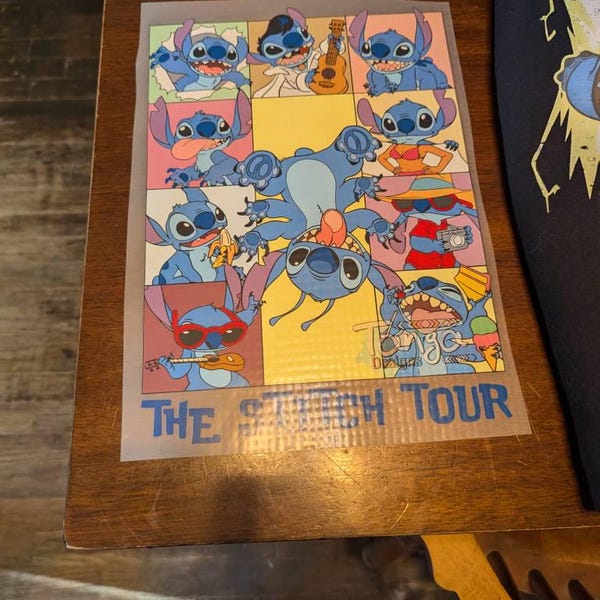Mastering Bespoke Print Techniques using DTF Transfers
In the world of custom printing, the need for innovation and quality has never been more pronounced. Among the emerging technologies in this dynamic industry, DTF transfers have captured the spotlight as a milestone for both small businesses and experienced professionals. Direct-to-Film printing offers a unique approach that not only enhances the vibrancy of designs but also simplifies the transfer process, making it available for everyone from enthusiasts to industry players.
As the prospects of custom printing unfolds, DTF transfers stand out for their flexibility and dependability. This method allows for detailed designs to be printed on a variety of materials, ensuring that creativity knows no restrictions. With the ability to achieve top-notch results that last, many are beginning to recognize that DTF transfers could very well be the key to perfecting custom printing in a competitive marketplace.
Understanding DTF Transfer Technology

DTF applications, or Direct to Film applications, are revolutionizing the custom printing landscape by presenting a flexible and premium method for transferring designs onto different substrates. This technique involves printing a design onto a unique substrate using a digital printer. The pigment used is generally environmentally friendly, making sure that the final output is not only colorful but also environmentally. After printed, a distinct bonding powder is sprinkled on the wet ink, which is then set, allowing adhesion to a wide range of materials.
One of the primary benefits of DTF printing is its flexibility to work on a variety of fabric types and colors, including fibers, synthetic fabrics, and mixed fabrics. Unlike conventional screen techniques, which needs separate screens for each color, DTF transfers can create full-color designs in a single pass. This effectiveness diminishes both time and costs, making it suitable for both small-scale and bulk orders. Additionally, DTF prints exhibit superb durability, washability, and flexibility, resulting in top-notch prints that endure.
As the interest for tailored and unique products persists to grow, DTF transfers are established as a pioneer in the custom design industry. Their convenience of use, combined with the capability to produce complex designs with rich colors, make them inviting to both amateur and professional printers. With improvements in technology, we can look forward to DTF transfers to become even more accessible and efficient, solidifying their role as a game-changer for custom design.
Essential Equipment and Supplies
To begin your venture with DTF transfers, having the appropriate tools and materials is important. At the center of this method is a reliable DTF printer, which is specifically designed to handle the specific inks and films used for DTF printing. Additionally, you will need DTF transfer films that have a particular coating to guarantee maximum ink adherence and vibrant print results. Be certain to invest in a good heat press that can maintain stable temperatures and pressures, as this ensures the right transfer to your preferred substrates.
Another key component of DTF transfers is the pigment-based inks, which provide excellent color and longevity. These inks are specifically formulated to attach with the transfer film and substrate during the heat transfer process. Together with the inks, adhesive powder is essential for ensuring the transfer sticks well to your materials. This powder needs be applied evenly to the printed film before heat pressing, promoting a strong bond that resists washing and wear.
In conclusion, you should consider acquiring a variety of substrates for your projects. DTF transfers are flexible and can be applied to cotton, polyester, and blends. Experimenting on different fabrics can help you understand how the transfers perform and function, allowing you to achieve the best results. Don’t forget to have necessary accessories like cleaning supplies and tools for maintenance, which will keep your equipment in top shape for all your DTF printing needs.
Step-by-Step Transfer Process
The initial step in the DTF printing process involves creating your design. Use graphic design software to create a high-quality graphic that suits your desired application. Pay heed to image resolution and color profiles, as these elements will considerably impact the ultimate print results. Once your artwork is ready, it must to be printed onto a special DTF transfer film using a suitable printer fitted with fabric inks.
After laying down the design onto the DTF film, the next phase is to apply a fine adhesive. This is done by applying the adhesive powder evenly onto the printed design while it is still moist. The adhesive will adhere to the printed design and facilitate for transfer to the base material. Once dtf transfers is spread, the film is placed in a heat press to set the powder. This action ensures that the adhesive secures properly to the artwork, making it ready for transfer.
Finally, the prepared DTF printing film is positioned with the material or substrate where it will be transferred. Using a heat press, set the necessary heat and pressure for a specific duration to effectively transfer the design onto the material. Allow it to cool before peeling off the transfer film, revealing a vibrant and durable design on the surface. This process showcases the efficiency and versatility of DTF transfers in personalized printing purposes.